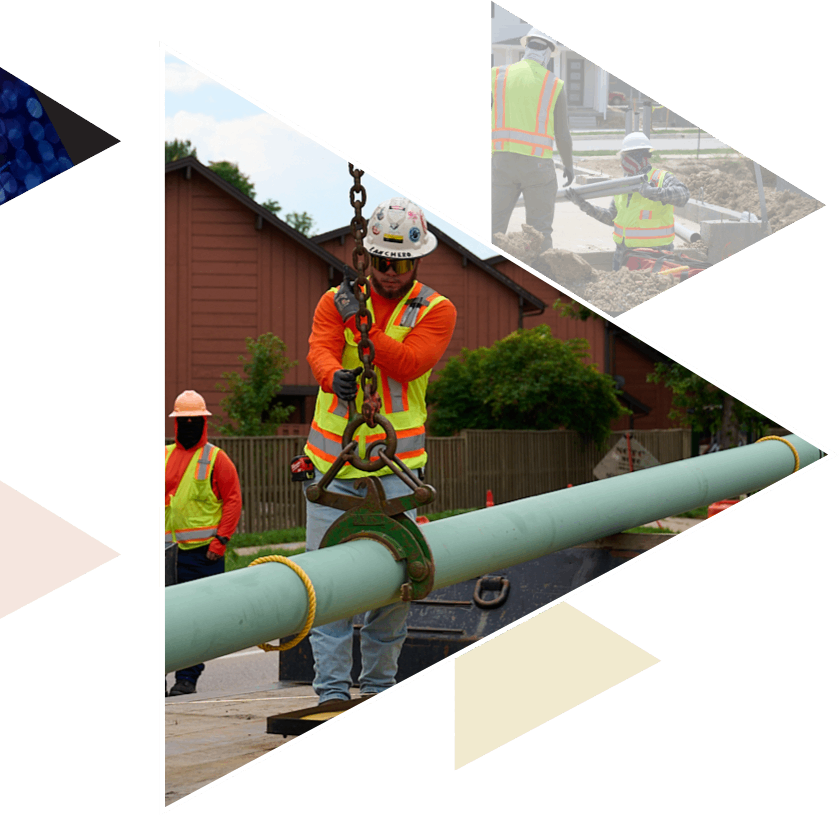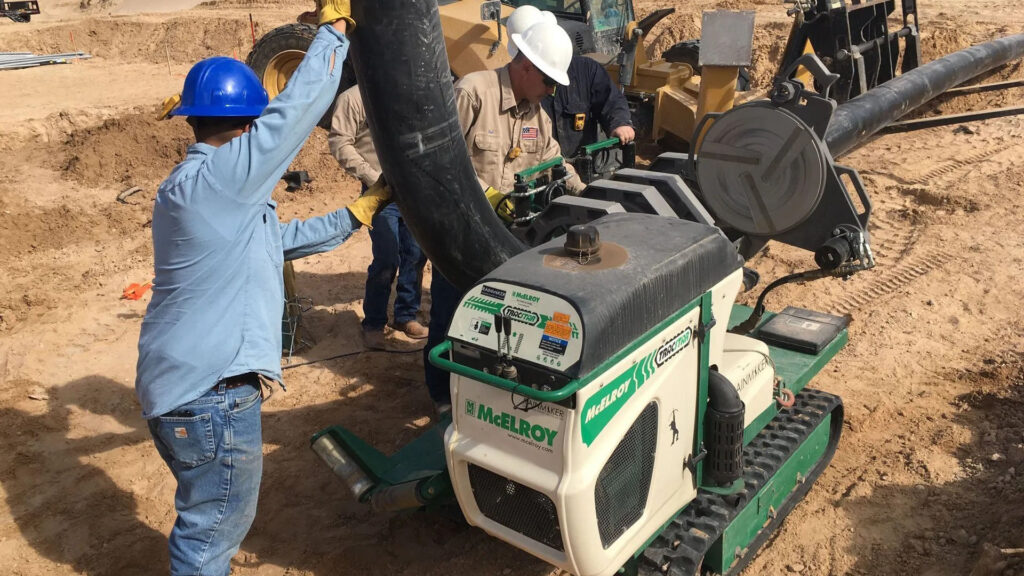Not known Facts About Permian Basin Pipeline Construction
Table of ContentsPermian Basin Pipeline Construction Can Be Fun For EveryoneHow Permian Basin Pipeline Construction can Save You Time, Stress, and Money.Facts About Permian Basin Pipeline Construction Uncovered5 Simple Techniques For Permian Basin Pipeline ConstructionNot known Facts About Permian Basin Pipeline ConstructionGet This Report about Permian Basin Pipeline ConstructionThe 25-Second Trick For Permian Basin Pipeline Construction
Cured-in-place pipeline (CIPP) is a trenchless innovation made use of to install water, sewage system, and other pipes without calling for major excavation or intrusive excavating. The procedure begins by putting a lining into the existing pipework, which is after that loaded with resin that hardens to create a permanent pipe within the existing pipe.At MaxLiner United States, we understand the advantages of using CIPP, which include its cost, rate, and marginal disturbance throughout installment. This makes it an excellent choice for professionals, plumbing technicians, organizations, and communities aiming to minimize downtime while setting up new pipes. One of the primary benefits of CIPP is its expense financial savings on labor and tools, resulting in a more affordable option than typical pipeline substitute methods.

Rather, a liner is put into the damaged pipe and treated in place with warm, creating a seamless fixing that gives long-term protection against root infiltration, deterioration, perforation damage, and other usual concerns with existing pipes. Not just does this method eliminate the requirement for comprehensive excavating, yet it also gets rid of the possible risks related to harmful waste elimination.
The Best Strategy To Use For Permian Basin Pipeline Construction
Expenses tend to be reduced than changing whole sizes of piping with open-cut setups also when factoring in the expense of liner materials. Because of its low environmental influence and cost financial savings possible, cured-in-place pipe installment is coming to be significantly prominent as a choice to standard repair service job in different sectors.
When it comes to cured-in-place pipeline (CIPP) installation, numerous advantages come from its minimal time and expense. Primarily, CIPP installments can be set up in a portion of the moment it would certainly consider conventional pipe replacement due to the fact that no excavation is needed - Permian Basin Pipeline Construction. Instead of excavating into the bordering soil and removing existing pipes, CIPP uses cutting edge trenchless innovation to mount resin liners or polyester fiber tubes inside existing pipelines
3 Easy Facts About Permian Basin Pipeline Construction Shown
This helps to decrease downtime and keep your job on course, resulting in time financial savings that would certainly not have been possible with traditional pipe replacement systems. Whether eliminating smaller sized sections of piping or carrying out complete relining jobs, this approach has certain benefits when it involves expense. Not only is tools rental gotten rid of given that no excavation is required, but so are site reconstruction costs since a minimal surface repair service might be needed after installment.
With very little time and cost required for installment, cured-in-place pipeline installment is an excellent alternative for reducing down on labor expenses without compromising quality job. As we'll discuss in the adhering to area, this sort of setup provides huge advantages when it pertains to decreasing interruption around homes and organizations.
The 25-Second Trick For Permian Basin Pipeline Construction
This trenchless installation is a lot less complicated to carry out than traditional pipe laying. As the name suggests, many excavation and associated site preparation is prevented because the new pipelines are fed via existing channels. This makes it feasible to mount below ground pipelines in a fraction of the moment required for the much more conventional excavating method, which can create unneeded interruption to the setting, regional roads, pathways, surrounding property owners, and so on.
In some cases, it might take a bit of digging if these gain access to factors are not currently installed in existing maintenance openings or catch basins. The outcome ought to still be much less disruptive than excavating lengthy trenches, but something to take into consideration before dedicating to this installation (Permian Basin Pipeline Construction). Overall, cured-in-place pipeline installation is viable when very little disruption is preferred given that the majority of the below ground infrastructure stays intact while supplying restored strength and dependability to existing pipelines


The cured-in-place installation process starts with inspecting the pipeline concerned to identify whether any kind of damage is existing or requires substitute. Afterward, if needed, cleansing should take location inside the pipe to ensure that all product build-up is removed and all surfaces are smooth and unpolluted prior to lining setup. When these actions are finished, an unique resin-coated really felt or crossbreed really felt and fiberglass material is put right into the pipe and uniformly dispersed along its size.
The Greatest Guide To Permian Basin Pipeline Construction
Curing (either ambient, heated water or air, or UV) is introduced right into the tube when this content the lining installment is total, treating and shaping the resin textile around the old pipeline's shape. It ought to be noted that excessive stress ought to be prevented in all expenses because it can trigger more damages to the system.
This thorough area regarding the 'Cured-In-Place Installation Refine' has described its detailed treatment. By recognizing what goes into this procedure and its difficulties, we can appreciate exactly how useful it can be for numerous piping repairs - Permian Basin Pipeline Construction. Currently let us go on to discover what sorts of products are utilized in this process in our next area
The 2-Minute Rule for Permian Basin Pipeline Construction
The ideal material can considerably affect the work, including cost-effectiveness, durability, efficiency, and efficiency. Polymer liners are often liked for CIPP because they are extremely long lasting and immune to corrosion and wear and tear. They can also last anywhere from 10 to thirty years, depending on the high quality of the products utilized.
It is usually much easier, much less turbulent, and more cost-efficient than conventional repair work. One of the primary advantages of CIPP pipe setup compared to the typical strategy of eliminating and changing any type of broken pipe sections with brand-new product is that CIPP pipeline does not need excavating or excavating the surrounding locations.
This reduces the moment and labor required for intricate restoration tasks. CIPP materials are thinner than areas of the new pipe, so they require really little area while using remarkable durability and sturdiness compared to various other approaches of repairing broken pipes. While CIPP installation offers some distinctive advantages over typical approaches of fixing pipes, it can have certain constraints relying on which sort of particular situation needs it.
Permian Basin Pipeline Construction Things To Know Before You Buy
On the whole, CIPP pipe installment presents several advantages when it involves conserving time, money, and initiative during pipeline repair work tasks. These advantages make it an eye-catching choice for those looking for fast yet reputable methods to attend to damaged pipes in the house or in business setups. find this In the adhering to area, we check here will go over an overview of cured-in-place pipe setup in higher information to provide you an even better understanding of its many benefits.